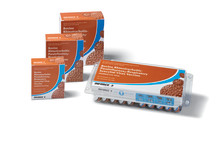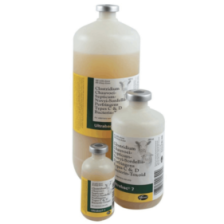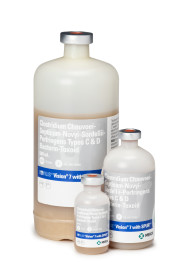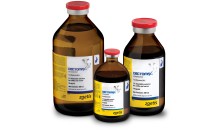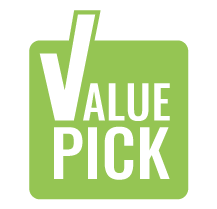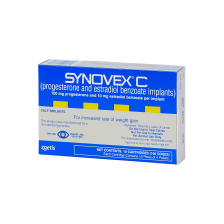3 Tips to Prepare for a Successful and Profitable Fall Run
Setting yourself up for a successful and profitable fall run can significantly benefit your operation. But there are several factors you'll need to consider.
The guide 3 Tips to Precondition Calves for a Profitable Fall Run from FBN offers insight and product recommendations to help you develop a winning strategy for your herd.
Download the guide for free here.
In this blog post, we’ll cover:
What Is Fall Run?
What Is Preconditioning?
Tip 1: Proactively Plan
Tip 2: Prioritize Herd Health
Tip 3: Carefully Manage Nutrition and Improve Feed Efficiency
The Economic Impact of Fall Run
What Is Fall Run?
Fall run is the period when producers prepare to transition their herd from the ranch to feedlots or sale barns. This can be a stressful time for cattle, especially those susceptible to respiratory disease and nutrition-related illness, and often presents several challenges for livestock producers.
What Is Preconditioning?
Preconditioning is the process of preparing calves to perform well in the feedlot. Taking these steps can help to:
Reduce fall run health risks
Give cattle a foundation to gain at faster rates
Enhance their market value
Preconditioned calves have strengthened immune systems and can acclimate smoother and faster when entering the feedlot. This can be triggered by learning to eat from a bunk, drinking from water tanks, and establishing an immune response from being commingled with other calves in a new and unknown environment.
A good preconditioning program takes a three-prong approach, outlined in the tips below, to set up calves for success in the feedyard during fall run.
Tip 1: Proactively Plan
Producers must consider several factors to ensure a smooth livestock migration when prepping for fall run, including:
Timing: When is the ideal time to initiate fall run based on weather patterns, forage availability, and the condition of the animals?
Destination: Can suitable pastures or ranches nearby with adequate forage and water sources sustain the herd through the winter?
Infrastructure: Are fences, water troughs, and shelter in the destination area?
Transportation: Do you need to account for logistical considerations such as road conditions or permits to transport livestock?
Communication: Are any permits or agreements required to move livestock across different properties or jurisdictions? Have you informed landowners, neighbors, or local authorities about your fall run plans?
Record-keeping: Do you have accurate identification and health records documentation to stay within regulatory compliance?
Contingency plans: Have you created a contingency plan for potential challenges, such as inclement weather, illness, or accidents?
Adjustment plans: Is there anything you want to improve upon from recent years? For example, do you have enough hired help, or do you need to make modifications for regions impacted by drought?
Tip 2: Prioritize Herd Health
Maintaining the health and wellness of cattle is always a priority, but it is especially critical during fall run when cattle are being exposed to new respiratory illnesses, increased stress levels, and other health risks. Prepare for fall run by stocking up on essential animal health products ahead of time so you aren’t rushing to purchase vaccines, dewormers, and implants or searching for antibiotics after an outbreak occurs.
When creating a proactive fall run health plan for your herd, consider the following:
Vaccinations
Ensure cattle are up-to-date with all necessary vaccinations to prevent common diseases and minimize the risk of illnesses during this critical time.
Parasite Control
Rotate pastures and practice good manure management to minimize parasite exposure during fall run. Implement a strategic deworming program to control parasites and prevent their negative impact.
Stress Management
Fall run can be stressful on cattle due to weaning, transportation, and commingling with other animals. Gradually introduce new cattle to the herd to minimize stress in a well-managed, low-stress environment.
Environmental Conditions
Prepare facilities and pastures for changing weather conditions to ensure proper drainage to prevent mud and standing water, which can lead to hoof problems and disease. Provide adequate shelter and bedding to protect your herd from harsh weather elements.
Tip 3: Carefully Manage Nutrition and Improve Feed Efficiency
Managing nutrition and improving feed efficiency is top of mind for producers. Adding a feed program to your fall run strategy is essential for cattle to receive adequate nutrition, maintaining herd health, and optimizing productivity. Here are a few strategies to consider.
Monitor Body Condition
Maintaining the ideal body condition score will ensure your livestock are in the best position to perform this fall and winter. Adjust feeding strategies accordingly to target the correct intake, improve feed efficiency, and optimize overall productivity.
Evaluate Feed Quality
Account for regionality, weather, herd size, and overall health when determining your feed program. Based on the analysis of on-farm ingredients and forages, you may need to work with a nutritionist to adjust your feeding strategies to ensure your cattle receive a balanced ration with appropriate protein, energy, vitamin, and mineral levels.
Consider Feed Additives
Selected feed additives can enhance feed efficiency and nutrient utilization. For example, probiotics can improve gut health and nutrient absorption, while enzymes can enhance the breakdown of complex feed components. Consult with your nutritionist and veterinarian on feed additive medication options that mitigate disease impacts and improve herd health and performance.
Provide Clean Water
Water can easily become contaminated with soil, algae, minerals, and manure. When cattle drink poor-quality water or drink less than the recommended amount as a result, they may become dehydrated and decline in performance and overall health. Ensure that fresh water sources are regularly cleaned and available at all times. If cattle in the pen are sick, water needs to be cleaned and disinfected more frequently to mitigate disease spread between cattle sharing a water source.
The Economic Impact of Fall Run
The economic impact of fall run can vary based on market conditions, herd quality, and regional demand. With increased market demand, producers often see a substantial cash influx on their operations during fall run. This helps cover annual operating expenses such as feed, labor, and equipment and maintenance. By selling calves in the fall, producers can avoid the expensive feeding and caring costs associated with maintaining ownership through the winter months.
Local economies often see the benefits of a successful fall run by supporting job creation and economic growth in rural communities. Increased livestock sales generate revenue for auction markets, transportation services, feed suppliers, and other businesses involved in the ag sector.
Prepare for Fall Run with FBN
FBN offers a full lineup of animal health essentials so you can purchase all your fall run products in one spot, including:
Popular Fall Run Vaccines
Popular Fall Run Dewormers
Injectable
Oral
Topical
Popular Fall Run Implants
Nutrition
With convenient 24/7 online purchasing and direct-to-farm delivery, FBN provides a streamlined experience for all your animal health supplies. You can compare products and save money with transparent pricing.
If you need a prescription product, simply provide your preferred veterinarian’s contact information during your order checkout, and our team will contact them on your behalf to obtain the necessary prescription. Items requiring refrigeration will be packed in secure thermal boxes with frozen gel packs and delivered within 48 hours. See ordering instructions here.
Download the free guide 3 Tips to Precondition Calves for a Profitable Fall Run for more information on products.
Related Resources
© 2014 - 2024 Farmer's Business Network, Inc. All rights Reserved. The sprout logo, “Farmers Business Network”, “FBN”, "Farmers First", and “FBN Direct” are trademarks, registered trademarks or service marks of Farmer's Business Network, Inc.
The following trademarks are the property of their owners as listed or their affiliates. Zoetis Services LLC: Bovi-Shield GOLD 5, Bovi-Shield GOLD, Bovi-Shield GOLD One Shot, Inforce 3, One Shot, Synovex, Ultrabac, Dectomax; Intervet Inc.: Bovilis, Nasalgen, Vista, Safe-Guard, Ralgro, Valbazen, Revalor; Boehringer Ingelheim Animal Health USA Inc.: Pyramid, Presponse, Eprinex; Boehringer Ingelheim Vetmedica, Inc.: Bar-Vac, Synanthic; Elanco US Inc.: Component, Tylan, Compudose, Titanium, Cydectin; Hoechst Aktiengesellschaft: Panacur; Bimeda Animal Health Limited: Bimectin; Norbrook Laboratories Limited: Eprizero; ABS Global, Inc.: Encore. All other trademarks are the property of their respective owners.
FBN Direct products and services and other products distributed by FBN Direct are offered by FBN Inputs, LLC and are available only in states where FBN Inputs, LCC is licensed and where those products are registered for sale or use, if applicable. If applicable, please check with your local extension service to ensure registration status. Nothing contained on this page, including the prices listed should be construed as an offer for sale, or a sale of products. All products and prices are subject to change at any time and without notice. Terms and conditions apply.
All product recommendations and other information provided is for informational purposes only. It is not intended to be a substitute for consulting the product label or for specific professional advice. Where specific advice is necessary or appropriate, consult with a qualified advisor. Neither Farmer's Business Network Inc. nor any of its affiliates makes any representations or warranties, express or implied, as to the accuracy or completeness of the statements or any information contained in the material and any liability therefore is expressly disclaimed.
Individual results from use of implant products may vary and are dependent upon additional factors, including but not limited to weather, agronomic conditions and practices, animal diet, time, method and manner of application, application rate, and geography.
ALWAYS READ AND FOLLOW LABEL DIRECTIONS.
Complete the form below or call (877) 218-9411 to connect with a member of our livestock team about FBN’s liquid feed supplement.



